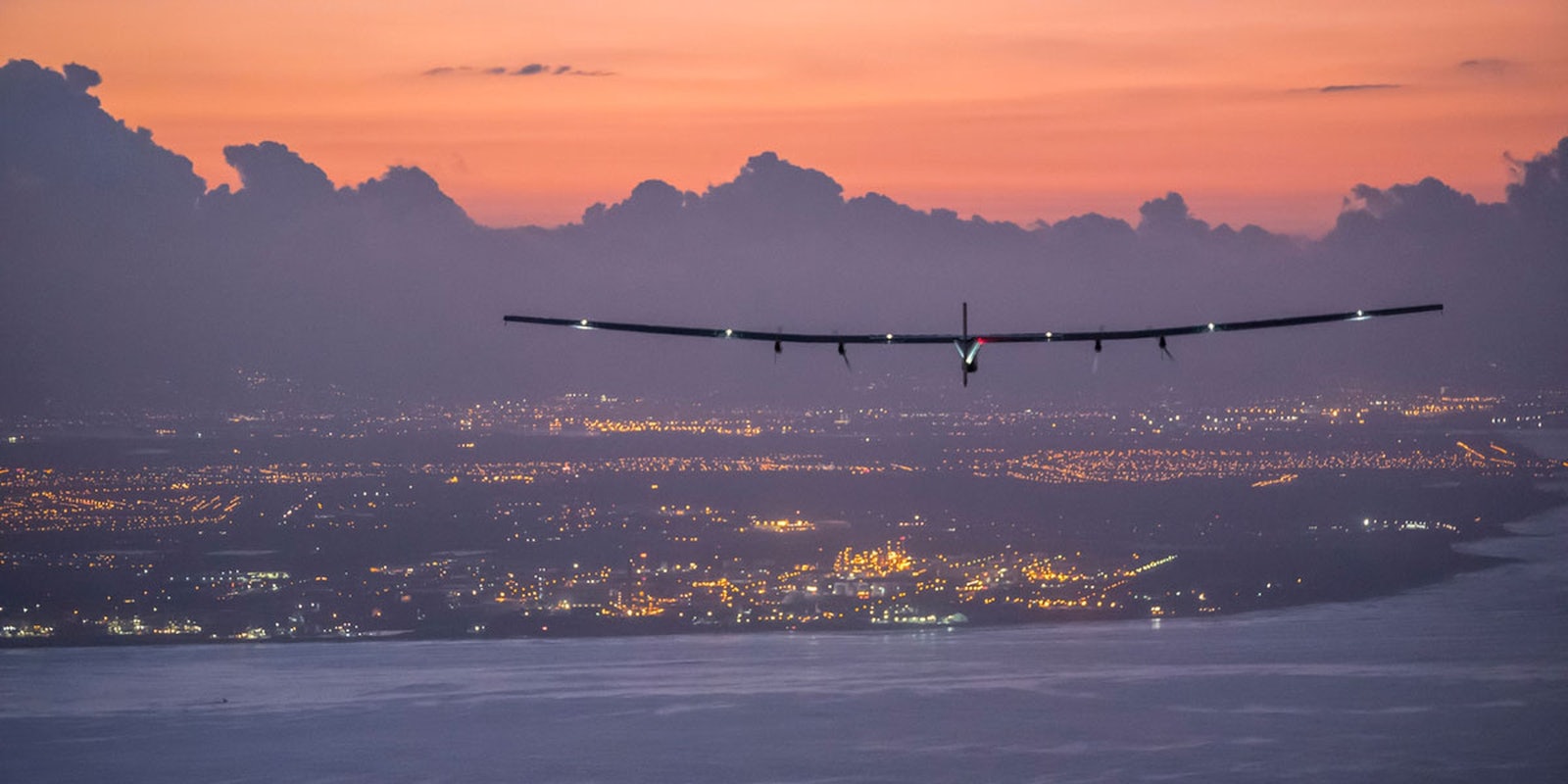The Solar Impulse 2 had already broken three records by the time it touched down in Hawaii yesterday after spending a history-making five days in the air.
During 5 days and 5 nights, I relied on the power of the sun, without any technical problem. It was extraordinary! pic.twitter.com/IMxK9uzfWj
— André Borschberg (@andreborschberg) July 3, 2015
Three days into its journey from Nagoya, Japan, to Honolulu, the solar-powered single-seat aircraft had already shattered the records for longest solo flight, longest distance traveled, and longest time in the air. By the time pilot André Borschberg touched down at Kalaeloa Airport yesterday, its final statistics had left previous fuel-powered accomplishments by the wayside: 117 consecutive hours in the air and 5,282 miles (8,500 km) across the vast Pacific.
https://vine.co/v/e1dEKrXtrPW
Prior to the Solar Impulse 2’s flight, the previous record for longest solo flight had been held by entrepreneur Steve Fosset, who flew 25,000 miles around the world in a 76-hour trip in 2006.
The @solarimpulse engineers built a fabulous airplane, which demonstrates the reliability of clean technologies pic.twitter.com/MRrcWaynxC
— André Borschberg (@andreborschberg) July 3, 2015
The Solar Impulse 2’s record-breaking flight started in Japan, but its journey really started 13 years and $100 million ago, when two men, Borschberg and Bertrand Piccard, founded the Solar Impulse project to promote clean energy. Dozens of engineers worked to design the plane, which has an optimal flight speed of about 28 miles per hour.
In March of this year, in Abu Dhabi, their achievements literally took flight in a steady round-the-world trip in the Solar Impulse 2, piloted by each of them in turn. The plane’s legs so far have included Oman, India, Myanmar, and China.
As the pilot on this trip, Borschberg did yoga in the cockpit of the tiny plane to help him stay awake. Both men were on hand to celebrate his successful flight early yesterday morning, along with the mayor of Honolulu and an excited crowd:
https://vine.co/v/e1jH2BMwDPt
I was dreaming of extreme adventure as a kid, but my dream really started to take shape when I met @bertrandpiccard pic.twitter.com/ihQJQTlIEw
— André Borschberg (@andreborschberg) July 3, 2015
The two pilots have five more stops to go to complete their round-the-world goal. After the plane’s stopover in Hawaii, Piccard will pilot the Solar Impulse 2 to Phoenix, Arizona. From there, the plane will head to stopover points in the midwest, New York, Europe, and finally back to Abu Dhabi.
As exciting as the trans-Pacific trip is for aviation enthusiasts, the real victory is for fans of the environment and clean energy.
117 hours and 52 seconds over the Pacific to reach Hawaii. Not one single drop of fuel. #futureisclean pic.twitter.com/pFwbYyaneZ
— Solar Impulse Foundation (@solarimpulse) July 3, 2015
Although the Solar Impulse 2’s slow speed means you’re not going to be boarding any commercial solar-powered jets any time soon, the durability and efficiency of the plane, which has 17,000 solar panels, is good news for fans of renewable energy.
Congrats to @solarimpulse on showing us that sometimes the impossible is possible. #winnipeg
— Dan McInnis (@dan_mcinnis) July 4, 2015
Photo via Solar Impulse


